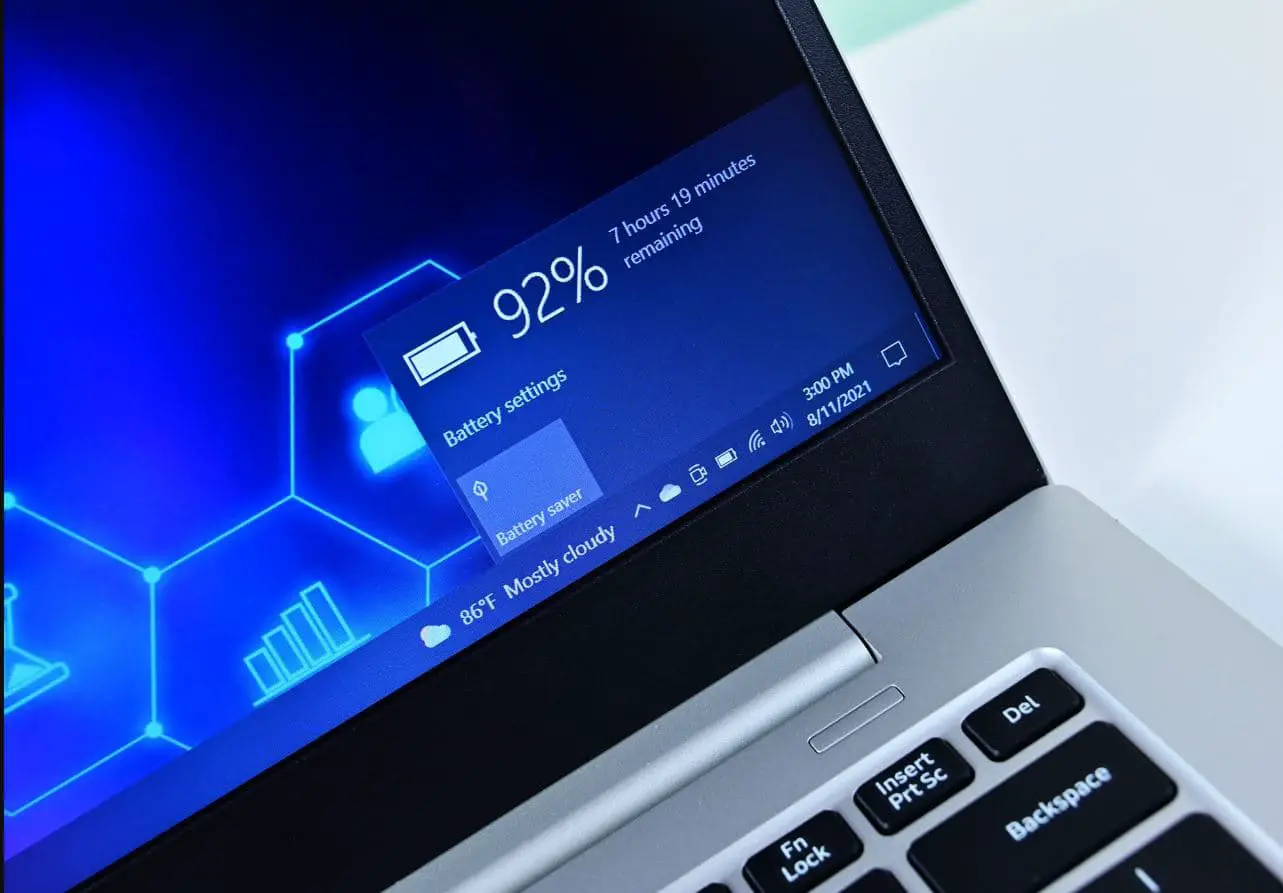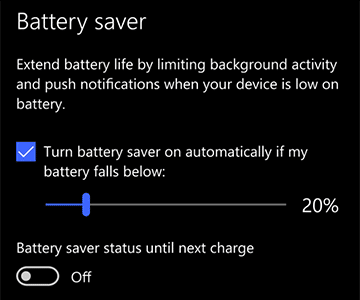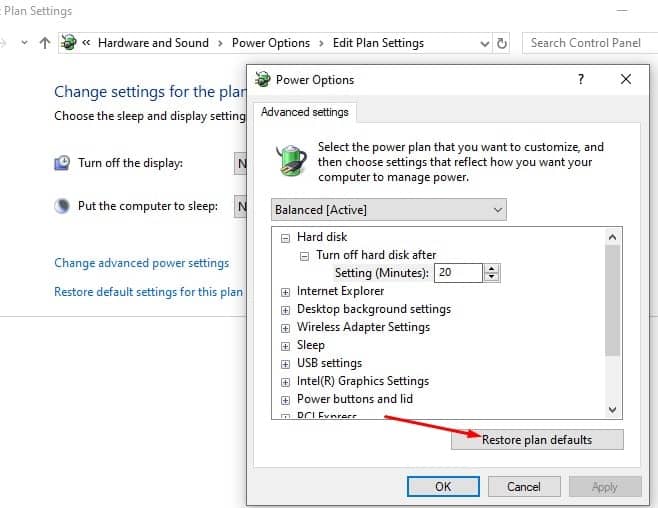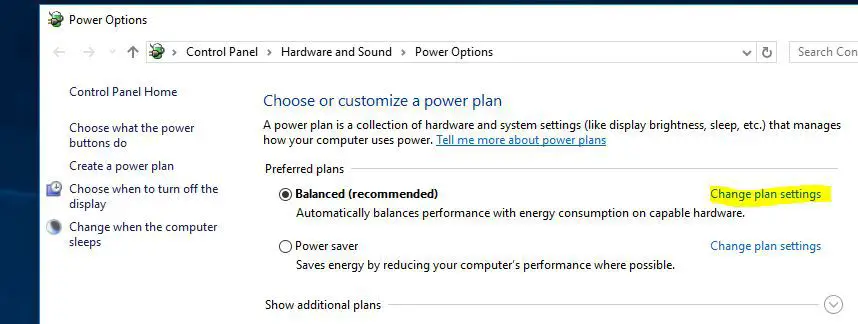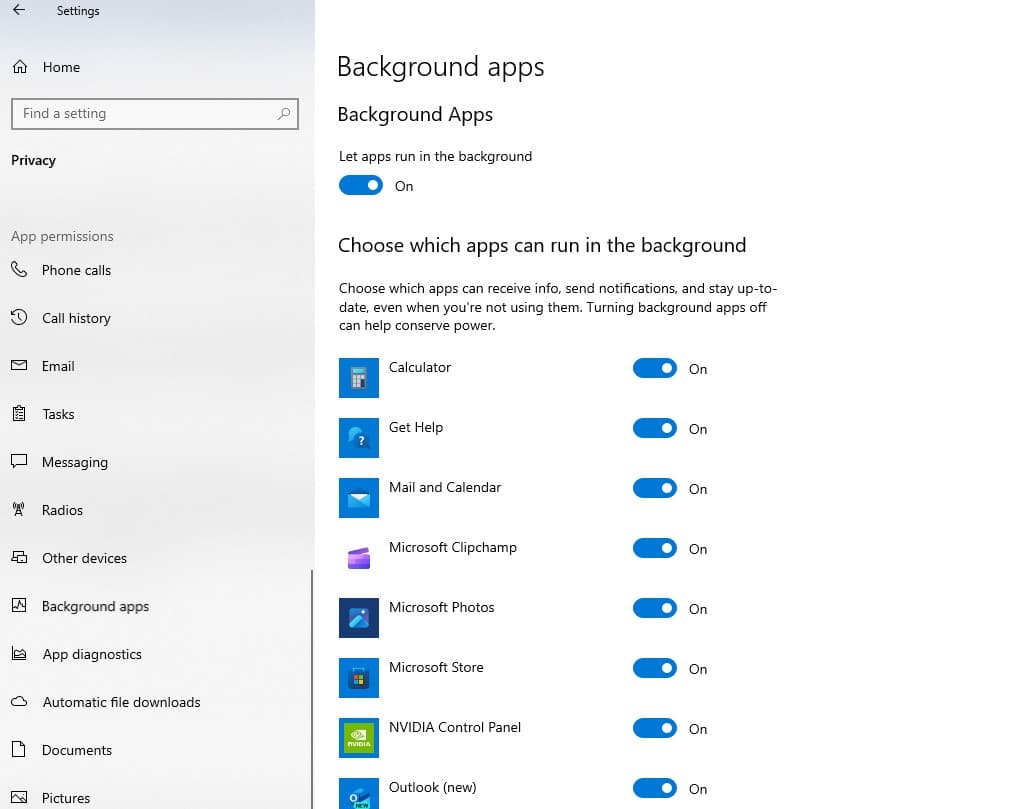Did your laptop battery drain quickly? The performance of a Laptop battery can be impacted due to several reasons such as power settings, how many apps are running, and even the temperature of the room in which you are working. Whether you’re a student, a professional, or a casual user, extending the battery life of your Windows 10 laptop is essential for uninterrupted productivity. Fortunately, there are numerous strategies and settings you can change to maximize battery life on Windows 10 and get the most out of your laptop.
How to Increase Laptop Battery Life Windows 10
Before changing the settings to extend Windows 10 laptop’s battery life, it’s essential to understand the factors that affect battery consumption. Several key components play a role in draining your battery, including the display brightness, CPU usage, background applications, and connected peripherals. By optimizing these factors, you can significantly increase the time between charges and enhance your overall computing experience.
The battery exhaustion level mainly depends upon the usage and the features activated on the laptop.
- Choose an energy-efficient power plan, like “Power Saver,” to reduce power consumption.
- Identify and close unnecessary tasks in Task Manager to free up system resources.
- Enable Windows 10’s Battery Saver mode to limit background activities and notifications.
- Lower brightness levels to reduce power consumption.
- Switch to hibernate mode for lower power consumption during inactivity.
- Disable unnecessary startup programs to reduce the initial system load.
- Regularly update Windows, drivers, and applications for optimal performance.
Enable Battery Saver Mode
On your Windows 10 Laptop, There are two power modes: Battery saver mode and the default mode. Enabling the built-in battery saver tool, turn off power-hungry background processes such as disables email and calendar syncing, live tile updates, push notifications, and apps from running in the background and help you get a few more minutes out of your battery.
Using a battery saver is the easiest way to extend battery life.
You can easily turn it from the Action Center or open Settings > System > Battery.
If you want the battery saver to turn on whenever the battery falls below a certain level, select Turn battery saver on automatically if my battery falls below: and set it where you’d like.
To turn on the battery saver now and leave it on until the next time you plug in your PC, turn on the Battery saver status until the next charge.
Turn the screen brightness down
The display is one of the most power-hungry components of any laptop. The brighter your screen is, the more power it consumes. By reducing the screen brightness, you can conserve battery life without sacrificing readability. Consider lowering the brightness to a comfortable level, especially when working in dimly lit environments or indoors.
- Use the keyboard shortcuts (usually Fn + Up/Down Arrow keys) to increase or decrease brightness.
- Alternatively, go to “Settings” > “System” > “Display” and adjust the brightness slider under “Brightness and color” settings.
You can also set your display to turn off automatically when you are not using your laptop by going to Settings > System > Power & sleep.
Turn off keyboard backlights
Like the display, keyboard backlighting also drains your laptop’s battery. Turn them off when they aren’t needed. Your laptop likely has a Function key that lets you toggle the keyboard backlights on and off. If not, you’ll find a control for it in the Windows Mobility Center.
Keyboard backlighting is a cosmetic feature that consumes power. Turning it off when unnecessary can help extend battery life.
Turn on Adaptive Brightness
Like smartphones, Windows 10 also comes with an adaptive brightness feature, and enabling this feature is another effective way to improve laptop battery life. For those who aren’t aware of this feature in which adaptive brightness features are enabled, your system will automatically dim the screen in the dark and set the brightness to provide you the best vision.
Adaptive Brightness is a feature that adjusts the screen brightness based on ambient lighting conditions.
- Go to Settings > System > Display.
- Toggle on “Change brightness automatically when lighting changes.”
Also, you can turn on this feature from Control Panel\All Control Panel Items\Power Options. click on Change Plan settings -> then click Change Advanced Power Settings Expand Display> expand Enable Adaptive Brightness. Now, turn on Adaptive Brightness for On-battery and Plugged-in options (whichever you like. Click Ok to save the settings.
Note: This feature will only work if your Laptop has the ambient light sensor installed.
Choose an Energy-Efficient Power Plan
Windows 10 also offers different power plans that affect how your laptop uses power. You can choose from three default power plans: Balanced, Power saver, and High performance. Balanced is the recommended option that balances performance and energy consumption. Power saver is the best option for maximizing battery life, as it reduces the performance of your processor, graphics card, and hard disk. High performance is the best option for demanding tasks, but it drains your battery faster.
To access these settings, simply navigate to the Control Panel or Settings app and select “Power Options.” From here, you can choose from preset power plans such as Balanced, Power Saver, or High Performance, or create a custom plan tailored to your preferences.
Managing Background Apps
Many applications run in the background, consuming valuable resources and draining your battery. To optimize battery life, review your list of installed apps and disable or uninstall any unnecessary programs. You can also prevent certain apps from running in the background by adjusting their permissions in the Settings menu or using third-party software to manage startup processes.
- Go to “Settings” > “Privacy” > “Background apps.”
- Toggle off the switch for apps that you don’t want to run in the background.
- Additionally, review the list of installed apps under “Apps & features” in Settings and uninstall.
Update Your Drivers and Software
Keeping your drivers and software up to date is not only important for security and performance reasons but also for battery life optimization. Some updates may fix bugs or improve efficiency which can extend your battery life.
- You can check for updates by going to Settings > Update & Security > Windows Update.
- There, you can see if there are any available updates for Windows 10 or other Microsoft products.
- You can also update your drivers by going to Device Manager (Win+X) and expanding each category of devices.
- Right-click on any device that has a yellow exclamation mark or a question mark and select Update driver.
Also you can visit the manufacturer’s website to download the latest drivers for your hardware components.
Updating drivers can fix compatibility issues, improve system stability, and enhance battery management capabilities.
Wi-Fi, Bluetooth and Other Settings
As we Always Turn off WiFi And Bluetooth on our smartphones to save Battery life, The same thing applies to Windows 10 Laptops. These features make it easier to connect devices to your computer but you should only turn on them when it is required otherwise they keep scanning for devices around and this process consumes battery. So it is always a good idea to turn these adapters on only when you want to connect through them. After that, you should turn them off.
You can easily control them from settings -> network & Internet -> Airplane mode
There are few more factors that can help you to improve battery life such as:
You should not use so many peripherals when you are running on battery, keeping system volume muted or on the lower level when you are not playing any music or video.
Again Constantly checking for new email messages can drain your battery. Reducing the email sync time every 30 minutes, hourly or manually is another effective way to save battery life.
Overheating can cause your laptop’s components to work harder, consuming more power. Use a cooling pad or ensure proper ventilation to maintain an optimal temperature.
In web browsers like Chrome or Edge, minimizing the number of open tabs, using ad-blockers, and enabling power-saving modes can lead to significant battery savings.
Windows provides battery health reports which can give you insights into your battery’s performance and capacity over time. You can generate a battery report using the Command Prompt with the command: powercfg /batteryreport.
So, these small tips can help to enhance battery life on Windows 10 thus you can have a better computing experience.
Also, Read
